Augmented Reality SEO: What To Expect in The Future

Augmented reality has the potential to revolutionize marketing as a whole in the next few years.
Some estimates even claim that AR-oriented products like camera glasses could be in the mainstream as early as next year.
And as more brands start to use augmented reality, there’s a good chance that it will start to affect the way that users browse the web.
With changes this big on the horizon, it’s worth taking some time to look at what augmented reality has already accomplished in the last few years.
This will help us see what is likely to change in the future, especially in regard to how it can impact SEO.
My hope with this article is to show you that augmented reality is only going to expand in the future.
The sooner your brand prepares, the better off you’ll be when the dust settles.
So to start with, let’s look at what makes augmented reality so unique.
Then, we’ll talk about what’s likely to happen in the coming years.
Augmented reality 101
According to most sources, augmented reality has been around since the early 1990s.
The United States Air Force reportedly created a complex system that also influenced the early stages of the 3D technology we know and love today.
But augmented reality has come a long way since those days.
With the advancements of the last decade and the smartphone explosion behind us, augmented reality now sits in our pockets on a daily basis.
People often confuse it with virtual reality, which typically involves wearing something like this:

This may have been the first thing that you imagined when I started talking about augmented reality, but it’s a completely different application.
This article will focus solely on augmented reality, which is divided into three distinct and unique forms:
- Information overlay
- Virtual objects
- Digital packaging
Each of these has different applications that brands around the world are already using.
In the case of information overlay, it’s hard to find a better example than the quintessential augmented reality game Pokemon Go:
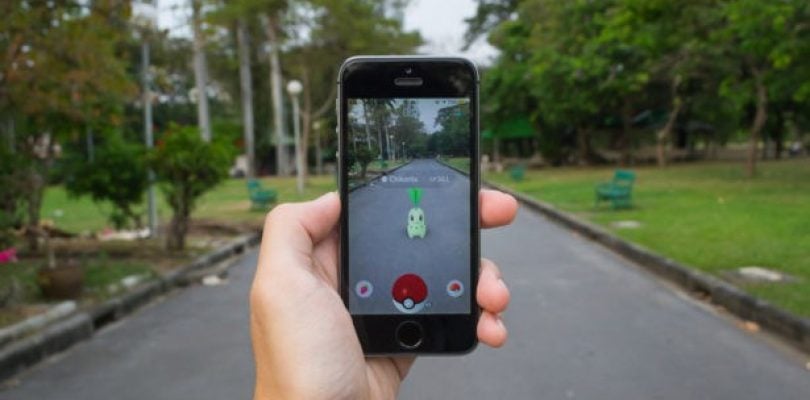
This immersive app is an AR version of a decades-old classic game. It allows users to find and catch digital monsters for their collection.
By overlaying an in-app digital projection on top of a video feed, the game gives the user the feeling that they’re a real-life Pokemon hunter.
When it first launched, it quickly outstripped other popular games in the app store and made millions of dollars.
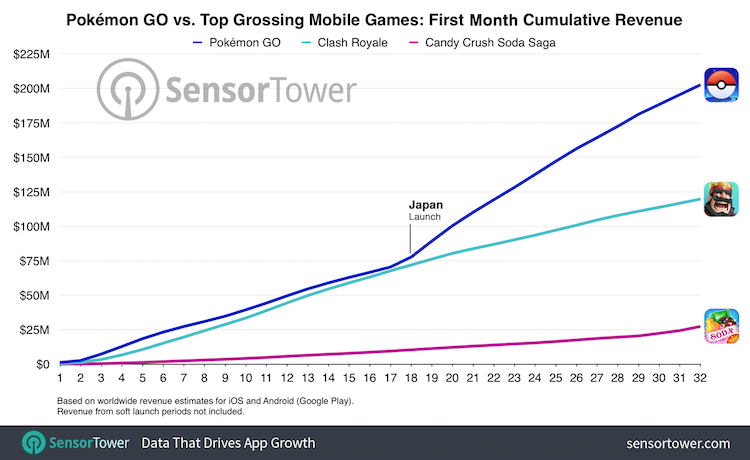
It was a clear win for augmented reality, and it’s the perfect example of how simple data overlays can be engaging for a wide audience.
The second classification of augmented reality that has gained ground in the mainstream is the use of virtual objects.
For an example of how this works, look no further than the Ikea Place app:
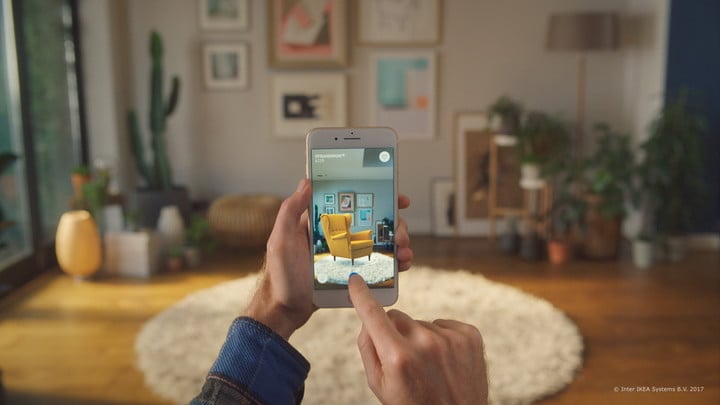
This style of augmented reality allows you to create images that are reactive to the physical surroundings that the camera displays.
In Ikea’s case, they use your feed to let you see how different pieces of furniture fit into your living space.
You can use the app to view different styles and colors. This allows you to customize your order based on how well it fits inside your home.
This creates a worry-free purchase based on your own preferences and findings.
Michael Valdsgaard, the head of the team that ultimately created Ikea Place, shared his own thoughts about augmented reality’s impact:
Apple has solved the AR question and is bringing it to mass market. As for other things, we have to see what is going to happen. We think AR really will explode, and once I can put lenses in my eyes and see products and be interactive with them in the real world, that will be big.
Though he’s slightly speaking tongue in cheek, Michael makes a good point.
Augmented reality can possibly change the way we interact with everyday objects. And we can see that in its final application: digital packaging.
Digital packaging augmented reality is when a user can interact with a physical object in a way that reveals a deeper experience.
If you want to see how that works, check out the applications that Blippar has created in collaboration with Marvel and Nature Valley.
This application is really the culmination of all three types of augmented reality.
It overlays data on your screen, and it creates something in a physical space that is both engaging and interactive.
And, while augmented reality is still in its relative infancy, all three of the forms are getting ready to make a direct impact in the very near future.
We’ve already seen AR become increasingly popular over the last few years, and projections show that the market will only continue to skyrocket.
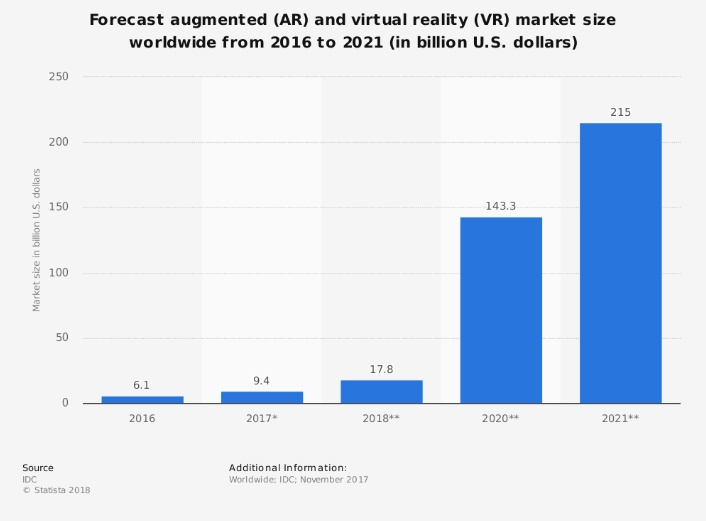
The biggest applications of augmented reality probably still haven’t even emerged, which tells you just how fresh this technology is.
More importantly, it should catch your attention because major tech companies have started taking note of it as well.
Google has been especially vocal, and they even talked about it at length at Google IO 2017
According to the presenters in this video, they’re actively seeking out ways to make it easier for companies and users to create immersive augmented reality experiences.
And they’re not alone in that endeavor.
Apple CEO Tim Cook has also confirmed that Apple is on the AR bandwagon as well.
So if Google and Apple are indicating that this trend is going to be more than just a trend, it’s worth looking deeper into how it’s going to affect your marketing efforts.
In Google’s case, it’s also worth evaluating how much of an impact augmented reality is going to have on SEO.
And Google has already shown us that they intend to use this technology in a disruptive way with Google Lens.
Google Lens allows users to take a photo on their phone and then interact with it to discover more information about its contents.
Check out the video they shared on Twitter when first introducing it.
This tool will ultimately change the way people learn about your business.
Instead of opening up a search engine on their phone, they’re going to open up their camera instead.
And when users change the way they browse, SEO changes with it.
So what can you do to ensure that your SEO stays in line with this revolutionary technology?
According to Google, you need to focus on creating micro-moments.
By preparing for these in-the-moment buying decisions, you can still win sales and stay at the top of your SEO game.
And as augmented reality gains more steam in the coming years, most SEO experts believe that there are certain expectations that you’d do well to prepare for.
Expectation #1: Local SEO will be more important
As one marketer put it, local SEO is going to be on steroids with augmented reality’s emergence.
One of the biggest distinguishing factors for augmented reality is that it uses your exact location.
You’ve already seen that there’s a huge potential for a service like Google Lens to create a more competitive local SEO playing field than ever before.
With services like Google Lens becoming more widespread, more users will be using augmented reality services to find businesses and read online reviews.

Yelp, the local listings giant, has even had augmented reality as an Easter egg on their app since 2009.
This means that consumers will be able to fire up an augmented reality app to learn more about your business. And that means that your local SEO needs to be in good shape.
And as more brands adapt and create their own augmented reality apps and services, it’s only going to get more crowded.
But at this point, local SEO should be a huge part of your SEO strategy anyway.
Local searches are becoming so common that users are now assuming that their phones will automatically find local results.
According to research from Think with Google, it is becoming less common for users to search with the phrase “near me.”

This isn’t because people don’t want local results. The nature of the searches shows that they do.
According to Google, mobile searchers now assume that their phones will automatically use their locations to pull up local results.
Local searches are now commonplace, and augmented reality makes it easier to be in front of your audience with minimal effort. Now is the time to get on board with local SEO best practices.
First and foremost, it’s a good idea to include your name, address, and phone number on your website.
And if you’re on any directory sites, make sure your information is consistent across the board.
Google tells us why this is so important:
Local results favor the most relevant results for each search, and businesses with complete and accurate information are easier to match with the right searches.
Augmented reality depends on real-world location to help users find information about your business, so including basic information on your website and other listings is an ideal practice.
You also need to make sure that you’re on the popular directory platforms available to everyday users.
In one study, Moz found that “My Business” profiles through Google, Yelp, and other services are the top factor in local pack SEO rankings.
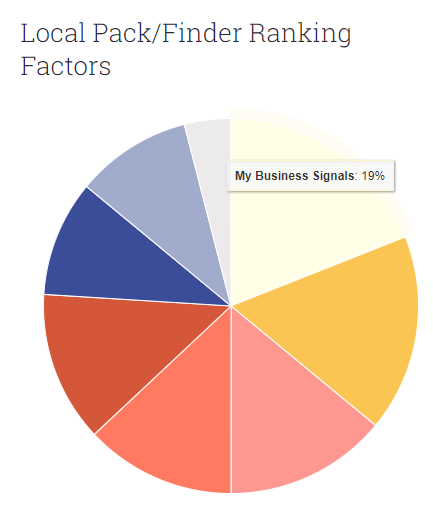
That means that you need to create your free Yelp for Business Owners profile and register your Google My Business.
By creating a presence on these platforms, you know that you’ll appear in searches for businesses in your local area.
It also means that when a user is browsing around them using an augmented reality service, your business is sure to pop up on their screen.
Apps like Yelp and Wikitude are already providing this type of augmented reality experience based on geolocation.
This snapshot from Yelp’s Monocle augmented reality feature shows you some results I got by simply pointing it at my hotel room door on a recent trip to Utah.
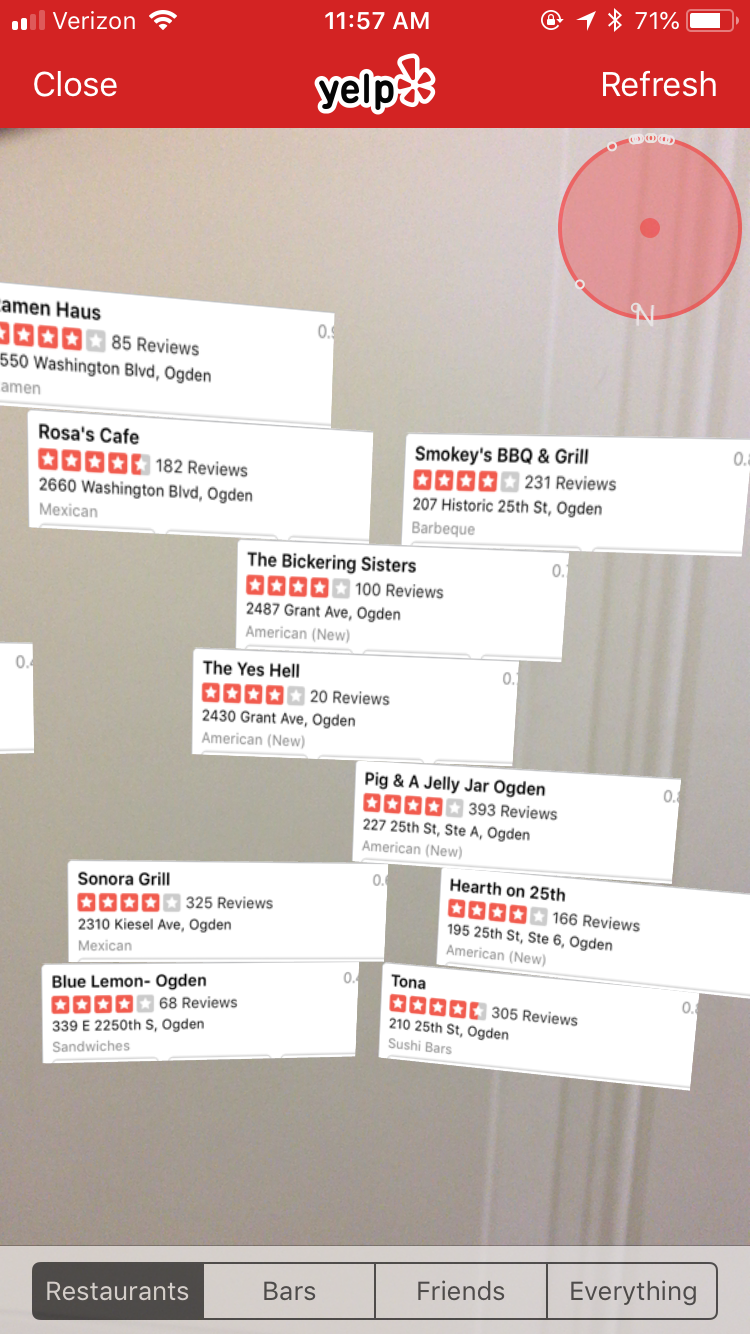
If I were to walk closer, I would be able to point my phone’s camera at the actual restaurant or business and learn more.
And by selecting one of the options, I would get to see the full Yelp profile with the reviews and everything.
Its competitor Google Lens works very similarly based on your Google My Business profile.
So setting up these profiles is vital for your augmented reality SEO.
By creating one of these profiles, you will automatically rank in your local pack searches.
Here’s what a Google My Business profile looks like from a mobile device:
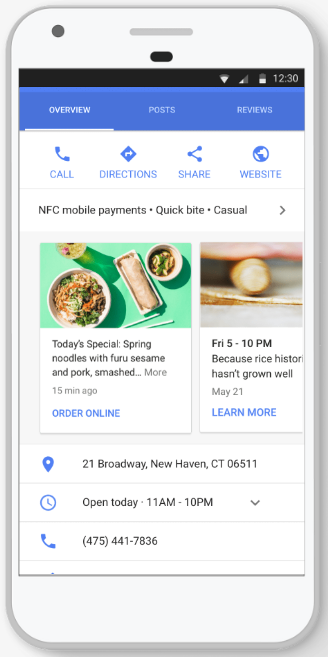
You’ve probably seen and even used these before, and you hopefully already have one set up.
It’s possible for your customers to set up these profiles for you, but you’d just be leaving your SEO to chance in that case.
If you don’t have one, this should be one of your top priorities.
Then, according to more of Moz’s data, your next big project should be to prioritize reviews and ratings.
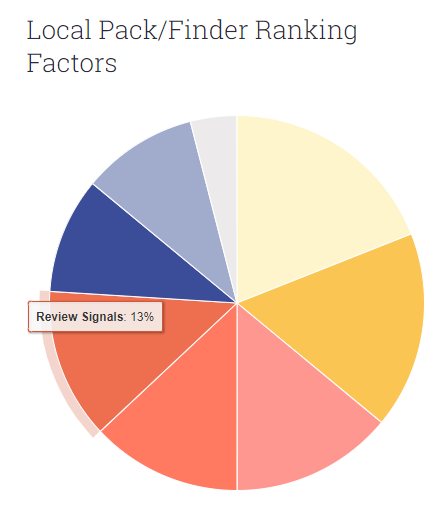
Business reviews are a force of SEO nature that you simply can’t ignore.
According to one survey, 84% of shoppers trust online reviews as much as they trust their friends.
And since 97% of consumers look at online reviews at least once per year, your business depends on good reviews to win more business.

So if your online reviews are less than stellar, your chances of getting business from augmented reality will suffer.
It’s very likely that users will maintain the same vetting behaviors when using augmented reality to find a business.
They’ll still read your reviews, which means that you need to find ways to win good ones.
That means asking customers who had a good experience if they’d be willing to share on Google or Yelp.
But when you have good reviews, don’t be afraid to promote them. Your good reviews can help you sell more products.
In one instance, American Apparel noticed a that their customers would look up online reviews while looking at products in-store.
So they created an augmented reality app to make the process easier for them.
This innovative approach to harnessing augmented reality is the perfect way to bridge the gap between local SEO elements and better customer experiences.
With better local SEO, you’ll be in a better position to ride the augmented reality wave.
Expectation #2: Social media will adapt even more
Social media is another area of digital marketing that has a direct impact on your SEO, so it’s not surprising that augmented reality will have an impact on it.
How well you perform on social media can either positively or negatively impact your rankings, and that isn’t likely to change.
A recent experiment only serves to cement the idea that social media posts and engagement ultimately help all SEO efforts.
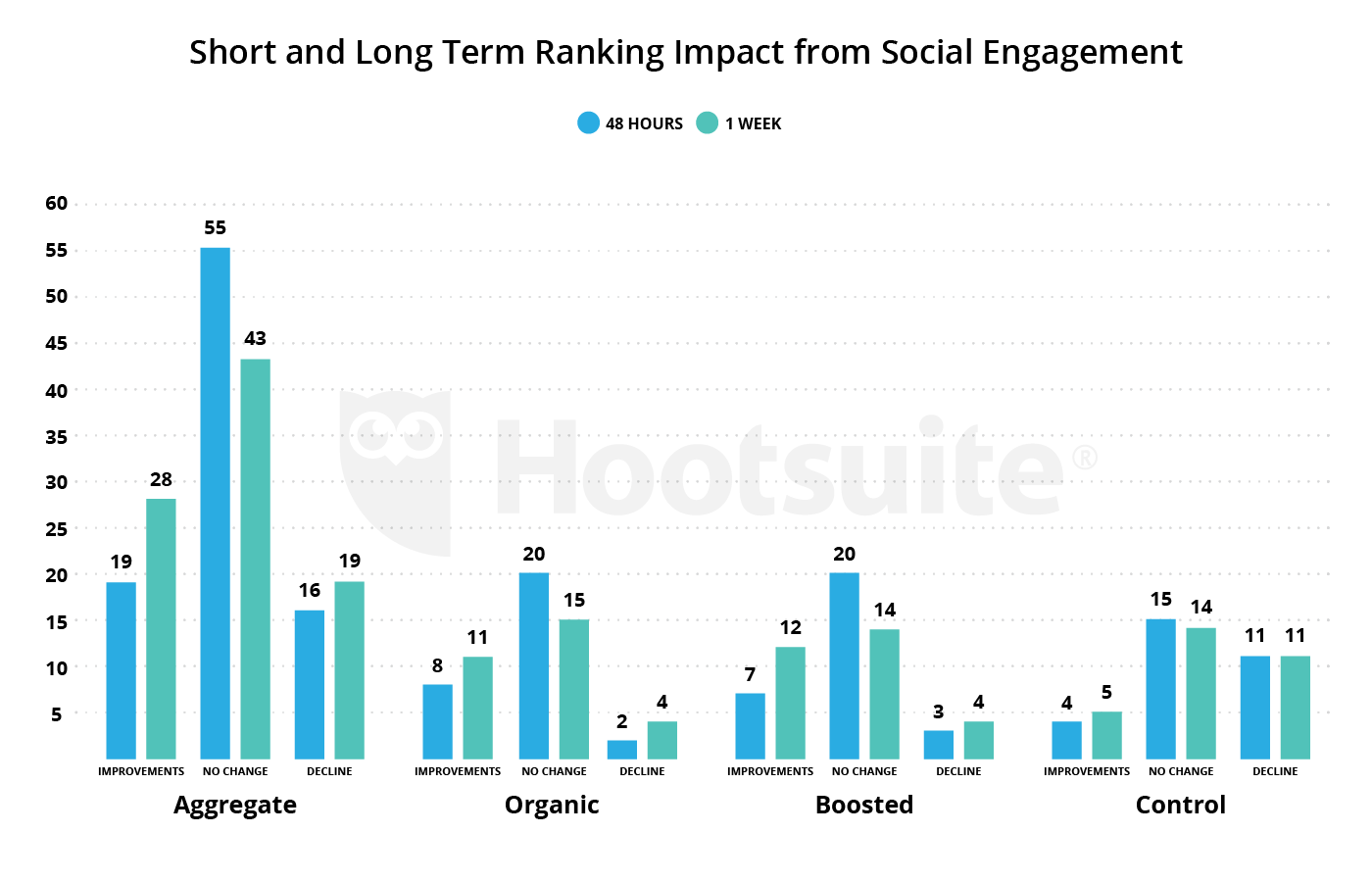
In their study, they posted a significant number of articles on Twitter and measured the before and after effects on their search engine rank.
The posts that they published organically or boosted saw dramatically better rates of improvement on Google.
And when they dove deeper into the data, the biggest reason seemed to be engagement.
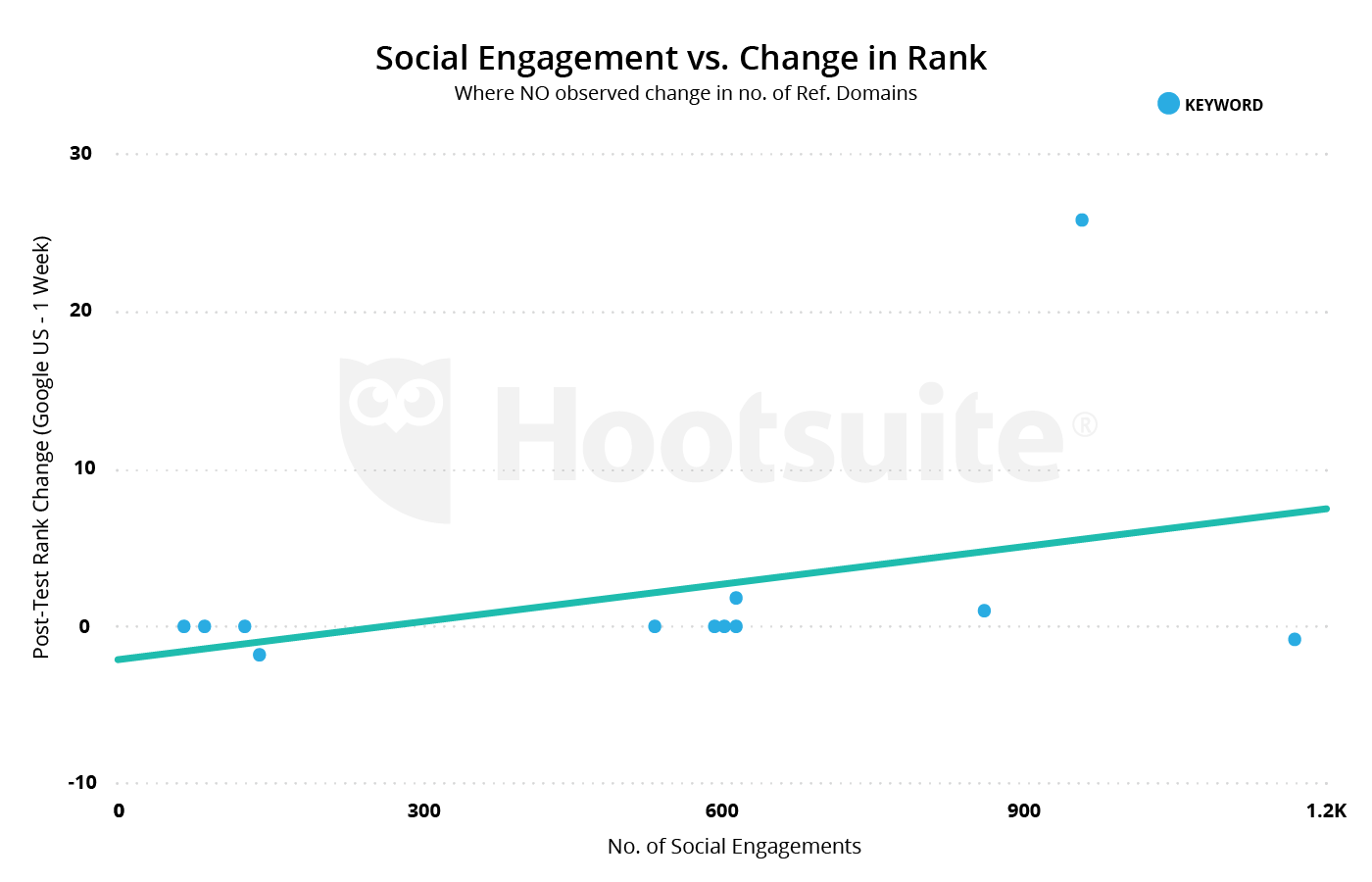
So it’s clear that social media is important when talking about any type of SEO.
And in the case of augmented reality, social media platforms are doubling down and creating more opportunities than ever before.
For example, Facebook has been outstripping just about everyone in their efforts to get ahead of AR for social media.

They’ve acquired 11 different companies in recent years that all have to do with augmented reality solutions.
You may have also seen the popular 360-degree videos that allow users to completely immerse themselves in what’s happening on their screen.

This type of practice is just the tip of the iceberg when it comes to augmented reality, though.
If you’re a Snapchat user, then you’re also aware of the new 3D images and effects that you can add to your stories and snaps.
They’ve also opened up access to their Lens Studio in an effort to allow more brands and advertisers to experiment with augmented reality’s capabilities.
These seemingly simple additions mark the biggest steps to date to start incorporating augmented reality technologies on social media platforms.
That means that using AR as part of your social media strategy has a high chance of impacting your overall SEO.
And you have some readily-available tools to help you do this, too.
For example, the ZapWorks platform is specifically designed to help small businesses start incorporating augmented reality technology with their brands.
Since they’re compliant with social media, they’re an ideal tool to start working on your own augmented reality strategy.
In one case, ZapWorks helped create an augmented reality experience at the International Advertising Bureau conference that saw a 55% increase in engagement.
And major brands have started dabbling in augmented reality social campaigns as well.
Oreo incorporated a mix of augmented reality and social media to help create a massive scavenger hunt that incorporated more than 20,000 retail locations.
And most recently, Nike has been turning heads with an augmented reality campaign that incorporates Facebook Messenger.
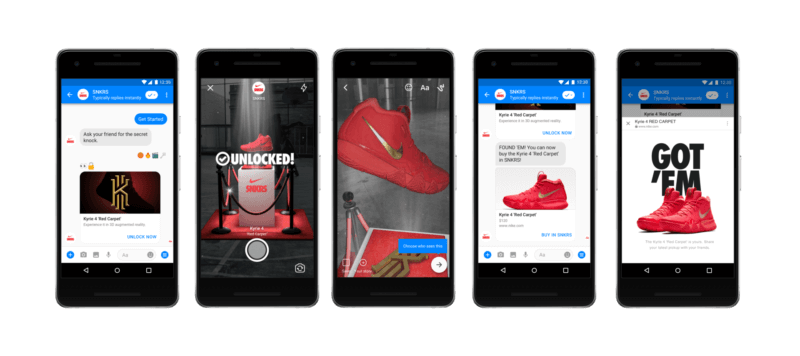
The campaign was so successful that the featured shoes in the experiment sold out in less than an hour.
This is just the start of what you can expect to see with augmented reality on social media.
As its popularity grows, it’s going to be more important than ever to boost your engagement by creating innovative augmented reality experiences.
It’s extremely likely that brands will discover new ways to use this technology to help users interact online, and these changes will play into your overall SEO efforts.
Expectation #3: More immersive website experiences will emerge
One of the elements of augmented reality that many haven’t considered is how it will affect your website.
With augmented reality starting to dawn on the physical world, it’s easy to ignore what it can achieve in the digital space.
It may surprise you to learn that it’s possible to implement augmented reality on your website, as this video demonstrates:
While this is a basic example of what you can accomplish, it displays the potential for your website to become more interactive and immersive than ever before.
And when you start making changes on your website, you start getting into the bigger picture of user experience.
It’s no secret that how a user experiences your website has an impact on your SEO.
Analytics like bounce rate and time on page play a large role in Google’s ranking of your website.
So the new question is, how can you create a user-friendly augmented reality experience that adds to your user experience and potentially helps your SEO?
The technology is still emerging, so the future is somewhat unknown.
But that doesn’t mean there aren’t already established best practices to consider before experimenting on your own site.
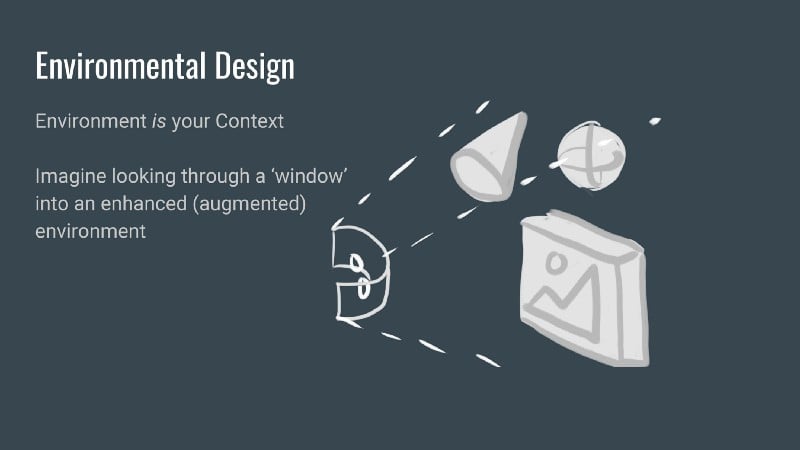
Environmental design is one of the key concepts of augmented reality, so it makes sense to consider it first.
Your user is viewing your augmentations through the “window” of their smartphone, so it’s vital to consider how you want your user to interact with everything.
For a user on a website, that includes elements like scrolling, load times, and other important SEO features.
You see how complex the issue can become.
Then, you have to decide how your audience will interact with your augmented environment.
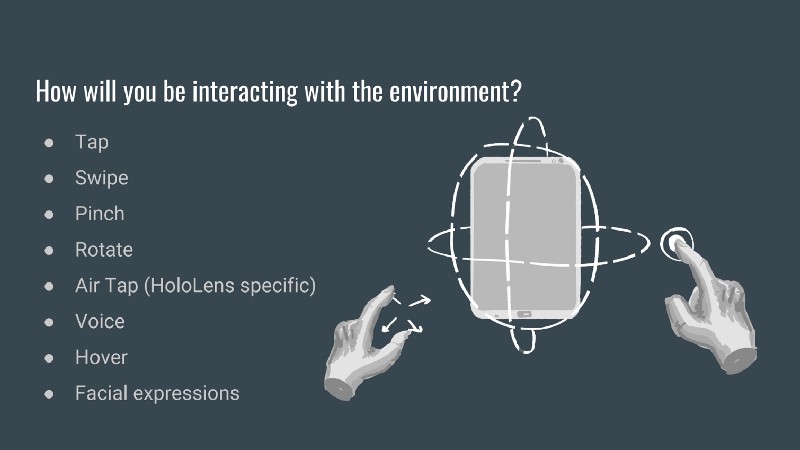
Do you want your site to change as your users scroll?
Or, will it change based on how they click?
All of these are newer user experience questions that websites will have to test, answer, and then modify.
And finally, you have to remember that your user experience in any format should center around a story.
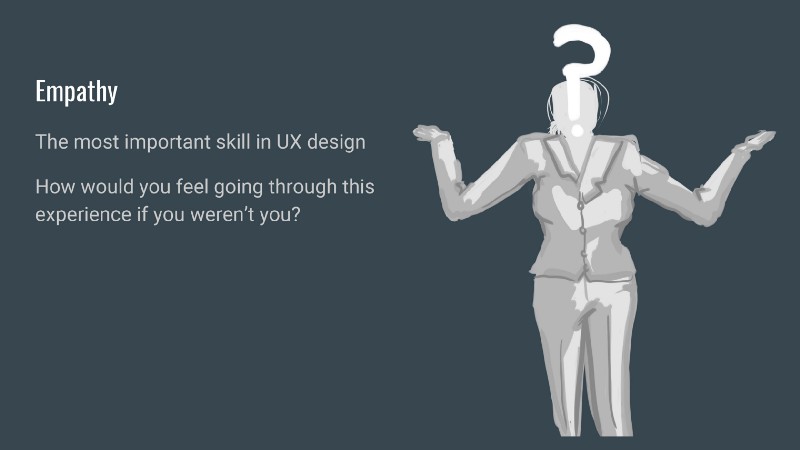
It will be important to find a way to tell your story without interruption and in a way that builds empathy.
If you want an idea of what this could look like, consider Immersv, a company that helps brands build AR ads. They have already implemented a modified augmented reality feature to their own website.
As you scroll down their homepage, you interact with a 3D environment that changes with your scrolling.

It’s simple, but it catches you off guard at first and provides a glimpse of future applications on a website.
The brand also promises some impressive results for businesses that want to use their services:

And that’s just the start of what this technology could lead to.
As augmented reality progresses, other possible uses could include things like holographic emails and interactive 3D models.
We still can’t know whether or not these things will ultimately reach the mainstream, but they’re worth considering and testing as the technology continues to grow.
Conclusion
Augmented reality is already changing the technology landscape, and it’s highly likely that the SEO world will change with it.
And with these innovative technologies creating such a unique way to engage with your online audience, it’s hard not want to start using it for your brand.
As Google, Apple, and other major companies start to push the technology, we’ll be able to learn more about which changes you should make to help your SEO efforts.
But in the meantime, there are a few likely ways that you can focus your SEO efforts to help you prepare for the future.
Local SEO will be more important than ever with tools like Google Lens gaining popularity and becoming easier to use.
That means that your Google My Business and reviews will be more vital than ever if you want to win new local business.
It’s also very likely that social media platforms will start to expand their use of augmented reality.
Facebook is already pursuing it, and a few brands are seeing success with 360-degree images and larger augmented reality campaigns.
And finally, it’s worth considering how augmented reality could impact your website’s design.
While we still can’t know for sure if mainstream web design will incorporate augmented reality, it’s very possible that it could become more popular in the coming years.
Whatever happens, it’s a good idea to keep your ear to the ground for future developments with this technology.
It could possibly change marketing and SEO as we know them, and that’s worth your concern.
How do you think augmented reality will impact SEO in the future?
The post Augmented Reality SEO: What To Expect in The Future appeared first on Neil Patel.
from Neil Patel https://ift.tt/2s1I1yf
No comments